Maryland is a bird lover’s paradise, home to a diverse range of species that can be found throughout the state.
From the majestic Northern Cardinal to the tiny, vibrant Red-eyed Vireo flitting about in gardens, Maryland’s bird population is a source of wonder and delight.
However, with so many different types of birds in the state, it can be hard to know where to start.
That’s why in this article, we’re going to explore the 12 most common birds in Maryland, from the beautiful House Finch to the charismatic Carolina Chickadee.
So, whether you’re an avid birdwatcher or simply want to learn more about the feathered friends in your backyard, keep reading to discover the fascinating world of Maryland’s most common birds!
| Image | Bird | Features | Price |
|---|---|---|---|
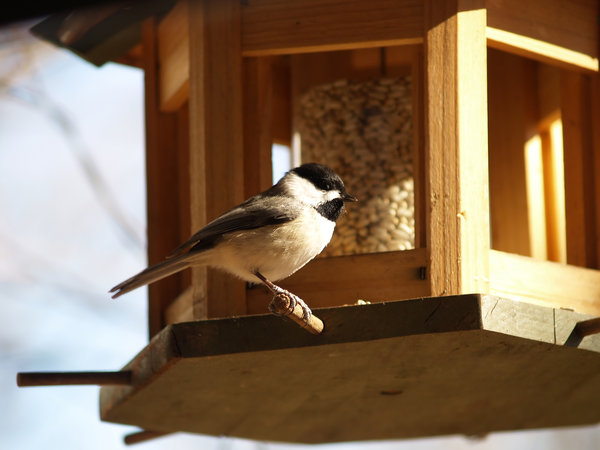 |
| 9.7 | Check Price |
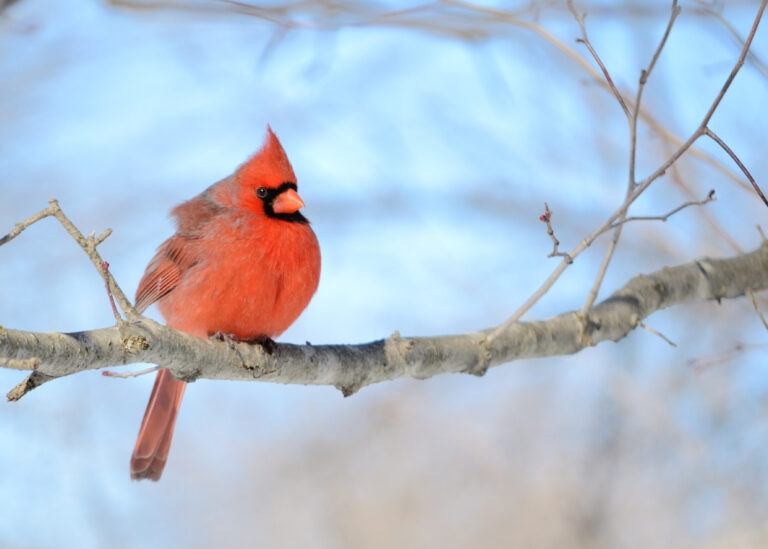 |
| 9.5 | Check Price |
 |
| 9.1 | Check Price |
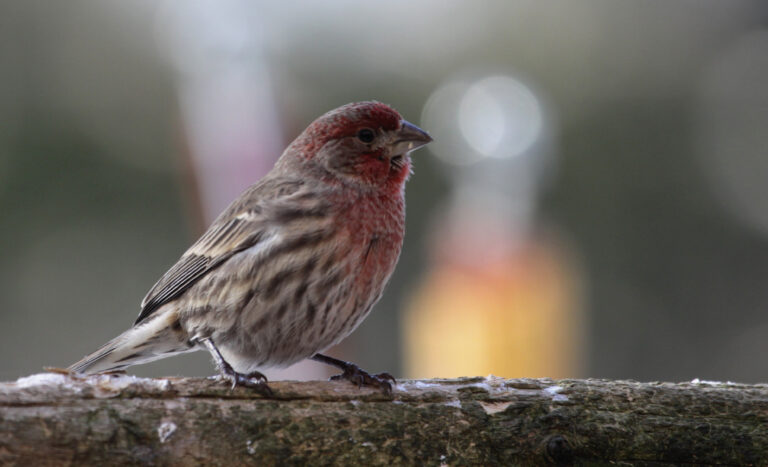 |
| 8.8 | Check Price |
 |
| 8.6 | Check Price |
 |
| 8.2 | Check Price |
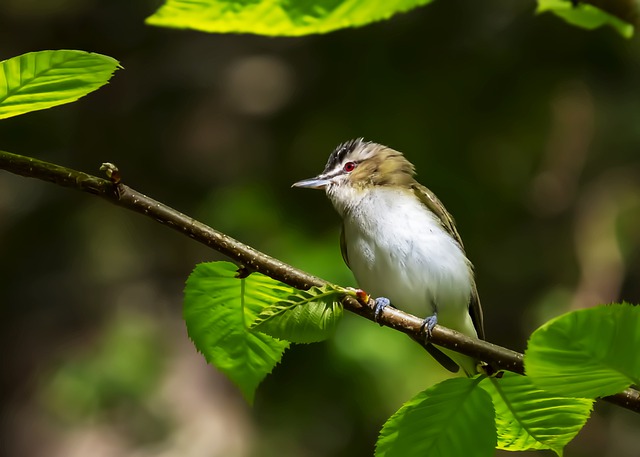 |
| 8 | Check Price |
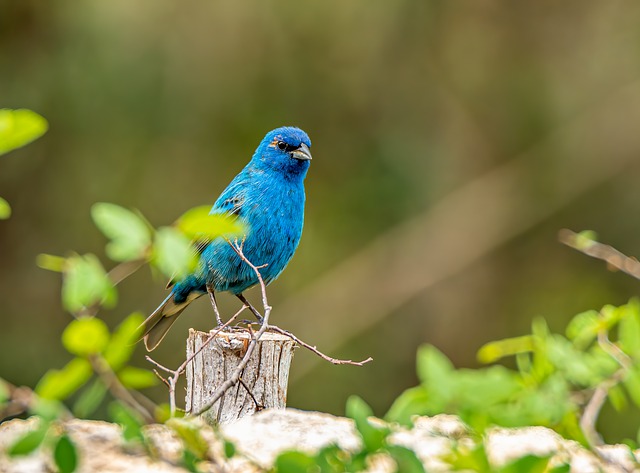 |
| 7.7 | Check Price |
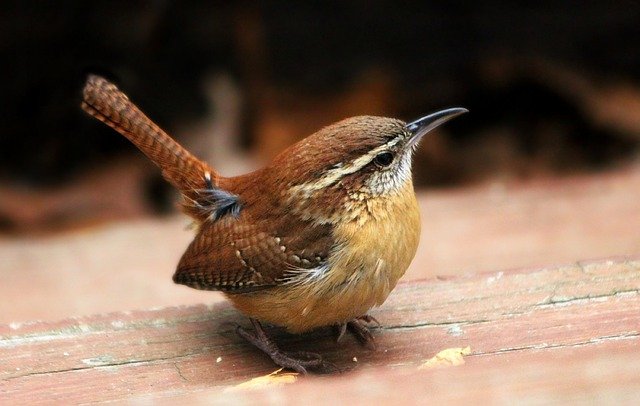 |
| 7.4 | Check Price |
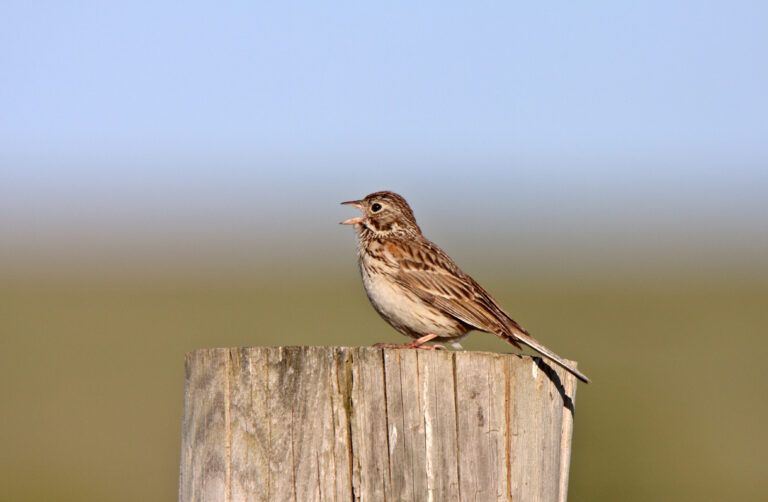 |
| 7.2 | Check Price |
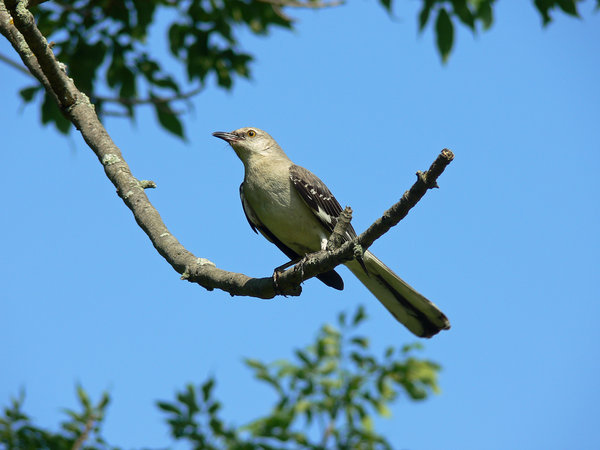 |
| 9.5 | Check Price |
 |
| 9.5 | Check Price |
If you don’t have the time to read the whole article, check out this video for a quick understanding.
Most Common Birds in Maryland
1. Carolina Chickadee

Carolina Chickadees (Poecile carolinensis) are cute little birds that have big heads with black-colored cap and neck that differentiates them.
They have a white-colored belly and cheeks with dull gray backs, wings, and tails.
Chickadees are not scared of humans at all. They do not mind when they see humans near them or the feeders.
They are teeny tiny birds. They can easily be recognized from a distance by their black-colored bib and cap.
Their cheeks are enhanced with white color; they have wings and backs in gray color.
Their bottoms are fuzzy and very lightweight.
The Carolina Chickadee is about 4 to 5 inches long from beak to tail.
The Carolina Chickadee weighs around 0.3 to 0.4 ounces, making it one of the smallest birds in Maryland.
The Carolina Chickadee has a wingspan of about 6 to 8 inches.
They are usually found in forests, parks, or backyards.
It is hard to tell the difference between black-capped chickadees and the Carolina Chickadees as they have a lot of similarities.
These only interbreed at places where the overlapping of their range exists.
If you want to attract these cute Carolina Chickadees to your home feeders, then try to add sunflower oilseed, suet, peanuts, or Nyjer seeds to these feeders.
They are not too picky, so they can feed on different kinds of feeders, for example, tube feeders, platform feeders, suet cages, etc.
The Carolina Chickadee is primarily an insectivore, feeding on insects, spiders, and other small invertebrates.
It also eats seeds and berries, particularly in the winter months when insect prey is scarce.
Below are the characteristics of the Carolina Chickadee,
| Scientific Name | Poecile carolinensis |
| Family Name | Paridae |
| Length | 4.5 – 5 inches (11 – 13 cm) |
| Weight | 0.3 – 0.4 oz (9 – 12 g) |
| Wingspan | 6.5 – 7.5 inches (17 – 19 cm) |
| Habitat | Deciduous and mixed forests, woodlands, parks, and suburban areas |
| Food | Insects, spiders, seeds, berries, and suet |
2. Northern Cardinal

Northern Cardinals (Cardinalis cardinalis) are mostly seen around places with bushes.
These commonly visit the backyard feeders and can be seen anywhere around you.
The time of dawn and dusk, these Northern Cardinals together in a group are seen feeding on safflower in the evening.
This time of their feeding of safflower is called the “Cardinal Cocktail Hour“.
The most common birds in Maryland have northern cardinals at the top of the list.
The Northern Cardinal is about 8 to 9 inches long from beak to tail.
The Northern Cardinal weighs around 1.5 to 1.8 ounces, making it one of the heavier birds in Maryland.
The Northern Cardinal has a wingspan of about 10 to 12 inches.
These birds are easily seen and recognized throughout the country, especially in Maryland.
Northern cardinals like to sit on heightened trees and random bushes that are about 30 feet of distance from the feeders.
This is because they like to stay close to feeders where they can easily get food and water for themselves.
Male northern cardinals have red-colored feathers with black masks. At the same time, females are lighter in color, like somewhat tawny brown colored with red in between.
Both of these birds can be spotted very easily by looking at their crest.
The crest of northern cardinals looks like Mohawks at the tip of their head.
They have mixed-colored beaks like a mix of red and orange color.
The Northern Cardinal is primarily a seed-eater, feeding on a variety of seeds and grains, as well as fruits and insects.
Below are the characteristics of the Northern Cardinal,
| Scientific Name | Cardinalis cardinalis |
| Family Name | Cardinalidae |
| Length | 8.3 – 9.3 inches (21 – 23 cm) |
| Weight | 1.5 – 1.7 oz (42 – 48 g) |
| Wingspan | 9.8 – 12.2 inches (25 – 31 cm) |
| Habitat | Woodlands, forests, shrublands, gardens, and urban areas |
| Food | Seeds, fruits, insects, and spiders |
3. White-throated Sparrow

White-throated Sparrows (Zonotrichia albicollis) have unique heads with different black and white stripes.
It consists of a throat whose color is white (not dull white but bright white).
It was also recorded that these birds have the color yellow in the center of both eyes and also the bill.
They have a brown color on their backs, and on the bottom side, they exhibit grey colors.
The White-throated Sparrow measures approximately 6.5 to 7 inches (16.5 to 17.8 cm) in length from beak to tail.
The bird typically weighs between 0.8 to 1.1 ounces (22 to 31 grams).
The wingspan of the White-throated Sparrow ranges from 7.9 to 9.1 inches (20 to 23 cm).
White-throated sparrows are usually seen in the forests and even along the edges.
They are usually seen in big flocks. These birds do migrate in some desirable seasons.
These would generally, in the season of winter, move towards the south of the country into the southern states.
They usually breed in Canada before they move towards the south side of the State.
White-throated Sparrows are attracted by the millets and the black sunflower oil seed feeders.
These feeders are left in the backyards of the residents so that White-throated Sparrows form attraction towards them.
The White-throated Sparrow feeds primarily on seeds and insects, but may also eat fruits and berries.
Below are the characteristics of the White-throated Sparrow,
| Scientific Name | Zonotrichia albicollis |
| Family Name | Passerellidae |
| Length | 6.3 – 7.5 inches (16 – 19 cm) |
| Weight | 0.9 – 1.1 oz (25 – 32 g) |
| Wingspan | 7.9 – 9.8 inches (20 – 25 cm) |
| Habitat | Coniferous and mixed forests, brushy areas, and suburban gardens |
| Food | Seeds, insects, fruits, and berries |
4. House Finch
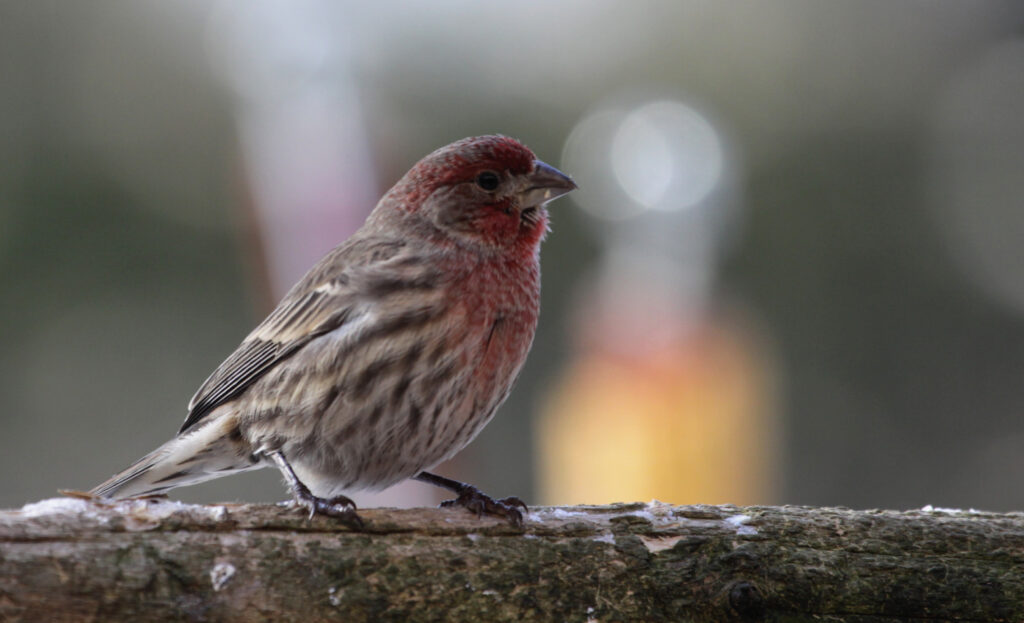
House Finches (Haemorhous mexicanus) are common in Maryland.
If you do not see them at your bird feeders, then they will probably be at treetops.
They come back quickly, though, for sunflower heart and safflower feeders.
They eat nyjer but usually, you will see them eating leaves.
The House Finch measures approximately 5 to 6 inches (12.7 to 15.2 cm) in length from beak to tail.
The bird typically weighs between 0.6 to 1 ounce (17 to 28 grams).
The wingspan of the House Finch ranges from 8 to 10 inches (20 to 25 cm).
They do not usually fly alone; you will see them in a flock, so among themselves, they bicker a lot.
Even if there is a threat or a loud sound, they will not fly away too far from their initial location.
They can make different kinds of sounds with their voice.
Sometimes it’s casual chirping; then sometimes they make soft noise of chirping, which is not annoying; instead, these are very calming.
They prefer treetops, rooftops, and fences even though they originally stayed on the grounds.
But now, because of excessive human intrusion, these birds have shifted to the treetops.
The House Finch feeds primarily on seeds and fruits, including those of various plants and trees such as sunflowers, thistles, and cherries.
Below are the characteristics of the House Finch,
| Scientific Name | Haemorhous mexicanus |
| Family Name | Fringillidae |
| Length | 5 – 6 inches (13 – 15 cm) |
| Weight | 0.6 – 1 oz (16 – 27 g) |
| Wingspan | 8 – 10 inches (20 – 25 cm) |
| Habitat | Urban and suburban areas, grasslands, deserts, and chaparral |
| Food | Seeds, fruits, insects, and buds |
5. Eastern Bluebird

Eastern Bluebird (Sialia sialis), just as their name suggests, are blue in color with an orange-red belly.
They are pretty common in Maryland, but you will not see them around feeders much.
The Eastern Bluebird measures approximately 6.5 to 7 inches (16.5 to 17.8 cm) in length from beak to tail.
The bird typically weighs between 0.9 to 1.1 ounces (25 to 30 grams).
The wingspan of the Eastern Bluebird ranges from 9 to 12 inches (23 to 30 cm).
You may be able to attract them to your birdhouse in the mating season.
Most people want them to be attracted to their birdhouses, and that is the reason behind the success of the bluebird house industry in the USA.
Females and males are almost similar in color, with the female being a little dull in color than the male bluebird.
Bluebirds are migratory birds. They tend to migrate to several regions of the world but not to the State of Maryland.
Here, in this State, you will be able to see these birds throughout the year.
The Eastern Bluebird feeds primarily on insects such as beetles, crickets, and grasshoppers, but may also eat fruits and berries during the winter months when insects are scarce.
Below are the characteristics of the Eastern Bluebird,
| Scientific Name | Sialia sialis |
| Family Name | Turdidae |
| Length | 6.5 – 8 inches (16 – 20 cm) |
| Weight | 1 – 1.1 oz (28 – 32 g) |
| Wingspan | 9.8 – 12.2 inches (25 – 31 cm) |
| Habitat | Open woodlands, fields, meadows, and suburban areas |
| Food | Insects, fruits, and berries |
6. White-Breasted Nuthatch

White-Breasted Nuthatches (Sitta carolinensis) are the most usually seen type of nuthatch in Maryland.
The White-Breasted Nuthatch measures approximately 5.5 to 6.5 inches (14 to 16.5 cm) in length from beak to tail.
The bird typically weighs between 0.6 to 1 ounce (18 to 28 grams).
The wingspan of the White-Breasted Nuthatch ranges from 8 to 10 inches (20 to 25 cm).
They like peanuts and love sunflower hearts, so to attract them, you can use these in your bird feeders.
These like to rest on trees in between their flights toward the feeders. They do not directly move to the feeders.
They will most likely be seen around feeders whenever there are more birds feeding there.
The males of the White-Breasted Nuthatches species are larger than the female by 2 to 3 inches of difference.
The White-Breasted Nuthatch feeds primarily on insects and spiders, but may also eat seeds and nuts, which it stores in crevices of trees.
Below are the characteristics of the White-Breasted Nuthatch,
| Scientific Name | Sitta carolinensis |
| Family Name | Sittidae |
| Length | 5.5 – 6 inches (14 – 15 cm) |
| Weight | 0.6 – 1 oz (18 – 28 g) |
| Wingspan | 8.5 – 10 inches (22 – 26 cm) |
| Habitat | Deciduous and mixed forests, woodlands, and suburban areas |
| Food | Insects, seeds, and nuts |
7. Red-eyed Vireo

Red-eyed Vireos (Vireo olivaceus), also known as Vireo Olivaceus, have olive green-colored backs and wings.
They have a medium-sized length. The Red-eyed Vireo measures approximately 5 to 6 inches (12.7 to 15.2 cm) in length from beak to tail.
The bird typically weighs between 0.4 to 0.5 ounces (11 to 15 grams).
The wingspan of the Red-eyed Vireo ranges from 8 to 10 inches (20 to 25 cm).
They also have some gray color on their shoulders and the tips of the wings.
There will be some lighter shades of Oliver color under the tail on the flank of Vireo.
They also have long tails of an olive color with some highlights of a gray color.
Their face has white in the lower parts.
Red-eyed Vireo has long and black or silver-colored bills with a hook at the tip of their bill.
To differentiate adults from youngsters, just look in their eyes. If you see red color, then they are adults.
These birds have silver crowns and eyebrow spots above their eyes which make them look like an angry king.
Their face is olive-colored with a few whites in between.
For example, the chin has some white, and above and below the line of the eye, there is a white color present.
The Red-eyed Vireo feeds primarily on insects, including caterpillars, beetles, and grasshoppers.
Below are the characteristics of the Red-eyed Vireo,
| Scientific Name | Vireo olivaceus |
| Family Name | Vireonidae |
| Length | 5 – 6 inches (13 – 15 cm) |
| Weight | 0.4 – 0.5 oz (11 – 14 g) |
| Wingspan | 8 – 9 inches (20 – 23 cm) |
| Habitat | Deciduous and mixed forests, woodlands, and forest edges |
| Food | Insects, spiders, and occasionally fruits |
8. Indigo Bunting

The Indigo Bunting, also scientifically known as the Passerina cyanea, has male and female distinctions.
The males have stunning and easily detectable features.
They have a bright light indigo blue all around their body with a black line on their face that stretches towards the front part of the eyes.
They also have a tiny crest which can be seen when these birds puff.
They also have wings and tails of length about medium size, and these have a gray shade in them.
Female Indigo Bunting has a light brown to olive color with a breast streak and underbelly of light shade too.
They have a white neck with blue tinges sometimes. The males of white color will be seen with a blue and brown mix patch.
The blue color starts to dominate as they age.
Their bills are stout and medium length with a conical shape.
The Indigo Bunting measures approximately 4.5 to 5 inches (11.4 to 12.7 cm) in length from beak to tail.
The bird typically weighs between 0.4 to 0.5 ounces (12 to 14 grams).
The wingspan of the Indigo Bunting ranges from 7.5 to 8.5 inches (19 to 22 cm).
The Indigo Bunting feeds primarily on seeds, insects, and spiders.
Below are the characteristics of the Indigo Bunting,
| Scientific Name | Passerina cyanea |
| Family Name | Cardinalidae |
| Length | 4.5 – 5 inches (11 – 13 cm) |
| Weight | 0.4 – 0.5 oz (11 – 15 g) |
| Wingspan | 7.5 – 8.5 inches (19 – 22 cm) |
| Habitat | Open woodlands, brushy fields, and roadsides |
| Food | Seeds, insects, and fruits |
9. Carolina Wren

The Carolina Wren (Thryothorus ludovicianus) is a rare and occasionally seen species of Bird Wren.
Carolina Wrens are small birds, measuring about 5-6 inches (12-15 cm) in length from beak to tail.
They typically weigh between 0.4-0.6 ounces (11-17 grams).
The wingspan of a Carolina Wren is generally around 7-8 inches (18-20 cm), which is roughly 1.5 times the length of its body.
These birds like to stay in open spaces, unlike most birds who prefer nesting near trees and nesting boxes.
This species of bird is usually found in northern to the mid part of North America, and specifically, it is found in the south of Labrador, Canada, and some are even found near southern Florida, Texas, Georgia, Louisiana, and Tennessee coastal regions.
The Carolina Wren favors wet and moist areas.
You will usually see them in the places like marshes and shallow pools.
Not just these, but also they can thrive in desert dry areas where there is hardly any water.
Carolina Wrens are opportunistic feeders and their diet varies depending on the season and availability of food.
They primarily eat insects, spiders, and other invertebrates, but will also eat fruits, seeds, and small vertebrates such as lizards and frogs.
Below are the characteristics of the Carolina Wren,
| Scientific Name | Thryothorus ludovicianus |
| Family Name | Troglodytidae |
| Length | 4.5 – 5.5 inches (11 – 14 cm) |
| Weight | 0.6 – 0.7 oz (18 – 20 g) |
| Wingspan | 11 – 12 inches (28 – 30 cm) |
| Habitat | Deciduous and mixed forests, woodlands, and suburban areas |
| Food | Insects, spiders, and occasionally fruits and seeds |
10. Song Sparrow
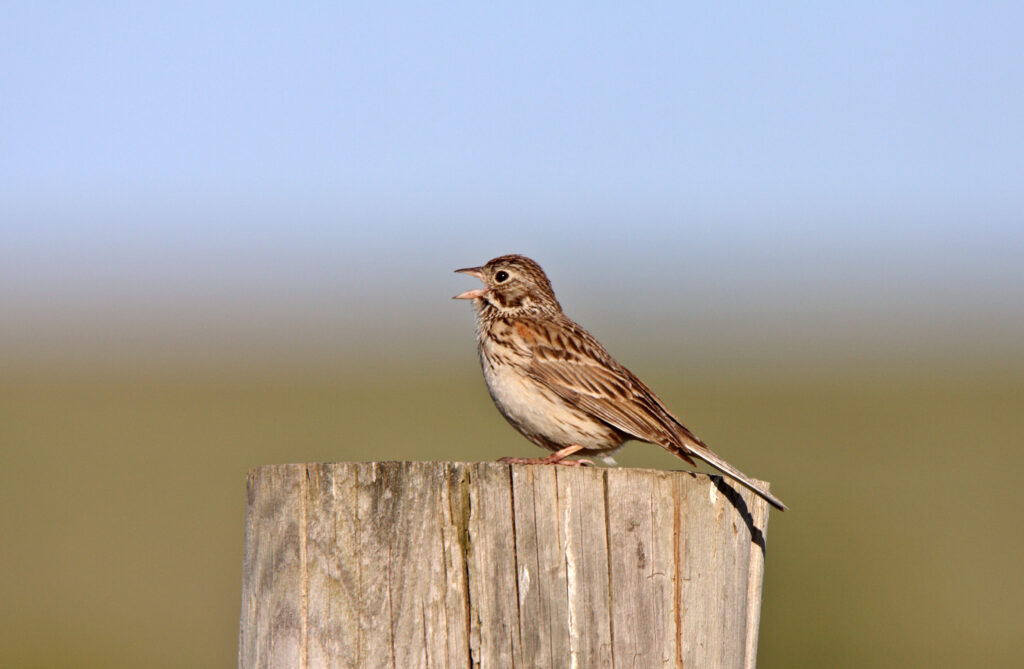
The Song Sparrow (Melospiza melodia) bird is a commonly seen ordinary bird that has a medium size.
Song Sparrows are small birds, typically measuring about 5-7 inches (13-18 cm) in length from beak to tail.
They can weigh between 0.4-1.4 ounces (11-40 grams), with males typically being slightly larger than females.
The wingspan of a Song Sparrow ranges from about 7-9 inches (18-23 cm), which is approximately 1.5 times the length of its body.
These range across different States like the State of Arkansas, Oklahoma, Maryland, Texas, and New Mexico.
It is the most versatile, riches, and widespread species among all of the native species of sparrows in the Northern part of America.
These birds are provided with plenty of sustenance on the roadside feeding points for the wild birds.
These birds can also be found along roads and railways, and other areas with open spaces.
They will be seen in places where they can have easy access to food and shelter, and that is usually in the southern half of the United States.
Song Sparrows are omnivorous and their diet consists of a variety of insects, spiders, and other invertebrates, as well as seeds, fruits, and small vertebrates such as snails and worms.
Below are the characteristics of the Song Sparrow,
| Scientific Name | Melospiza melodia |
| Family Name | Passerellidae |
| Length | 5.5 – 7 inches (14 – 18 cm) |
| Weight | 0.4 – 1 oz (11 – 29 g) |
| Wingspan | 7.5 – 9 inches (19 – 23 cm) |
| Habitat | Wetlands, grasslands, and brushy areas |
| Food | Seeds, insects, and fruits |
11. Northern Mockingbird

The Northern Mockingbird (Mimus polyglottos) is found in the southern part of the United States, usually in large forests with big trees like oak, hollow trees, pine, maple, and other thick trees.
Northern Mockingbirds are medium-sized birds, typically measuring around 9-11 inches (23-28 cm) in length from beak to tail.
They can weigh between 1.4-2.0 ounces (40-57 grams), with males being slightly larger than females.
The wingspan of a Northern Mockingbird ranges from about 12-14 inches (30-36 cm), which is approximately 1.5 times the length of their body.
They nest near places where they can easily get their feed too.
They get their food from the tree roots of these trees they are found in.
The female species are somewhat smaller than the male species of the northern mockingbird.
These males have sizes up to 11 inches in length.
They are active during the night and are primarily Nocturna.
They hunt during the dark but can also be seen in the daylight too.
Northern Mockingbirds are omnivorous and their diet consists of a variety of insects, spiders, and other invertebrates, as well as fruits and berries.
They may also eat small vertebrates such as lizards or snakes.
Below are the characteristics of the Northern Mockingbird,
| Scientific Name | Mimus polyglottos |
| Family Name | Mimidae |
| Length | 8 – 10 inches (20 – 25 cm) |
| Weight | 1.4 – 2 oz (39 – 58 g) |
| Wingspan | 12 – 15 inches (31 – 38 cm) |
| Habitat | Urban areas, open fields, and woodland edges |
| Food | Insects, fruits, and seeds |
12. Northern Flicker

In the early twenty century, Northern Flicker (Colaptes auratus) was recorded for the first time.
Northern Flickers are medium-sized woodpeckers, typically measuring around 11-12 inches (28-31 cm) in length from beak to tail.
They can weigh between 3.9-5.6 ounces (110-160 grams), with males being slightly larger than females.
The wingspan of a Northern Flicker ranges from about 17-21 inches (43-53 cm), which is approximately 1.5 times the length of its body.
After this, they became the center of attention for researchers for their identification and status. Except for the Southern parts of the United States and the Cayman Islands, Northern Flicker is a native species to all of Northern America.
It migrates laterally across the Atlantic towards the north of America.
This bird is found to be thriving in almost all the regions of its range.
Northern Flickers are omnivorous and their diet consists of a variety of insects, such as ants and beetles, as well as fruits and berries.
They may also eat small vertebrates such as lizards or mice. Unlike many other woodpeckers, Northern Flickers are known to forage on the ground for their food.
Below are the characteristics of the Northern Flicker,
| Scientific Name | Colaptes auratus |
| Family Name | Picidae |
| Length | 11 – 14 inches (28 – 36 cm) |
| Weight | 3.9 – 5.6 oz (110 – 160 g) |
| Wingspan | 16 – 20 inches (41 – 51 cm) |
| Habitat | Woodlands, suburban areas, and open habitats with scattered trees |
| Food | Insects, ants, and fruits |
Check out this article on Types of Woodpeckers in Maryland and Birds of Prey in Maryland.
Conclusion
In conclusion, Maryland is home to a diverse array of bird species, ranging from large raptors to tiny songbirds.
While there are many different birds that can be found throughout the state, the 12 species highlighted in this article are among the most common and easily recognizable.
Again, These are the Most Common Birds in Maryland:
- Carolina Chickadee
- Northern Cardinal
- White-throated Sparrow
- House Finch
- Eastern Bluebird
- White-Breasted Nuthatch
- Red-eyed Vireo
- Indigo Bunting
- Carolina Wren
- Song Sparrow
- Northern Mockingbird
- Northern Flicker
Whether you’re a seasoned birder or simply enjoy watching the birds in your backyard, taking the time to learn about and appreciate these fascinating creatures can be a rewarding and enriching experience.
By understanding more about the birds that call Maryland home, we can gain a greater appreciation for the natural world around us and work to protect these valuable and important species for generations to come.
FAQ
What is the best time of year to see migratory birds in Maryland?
The best time to see migratory birds in Maryland is during the spring and fall when many bird species are either migrating north for the breeding season or south for the winter. Some of the best locations to see migratory birds include parks, wildlife refuges, and nature preserves.
What can I do to attract more birds to my backyard in Maryland?
There are several things you can do to attract more birds to your backyard in Maryland, including setting up bird feeders with different types of seeds, planting native vegetation to provide food and shelter, providing a source of water such as a bird bath or fountain, and keeping your yard free of pesticides and other chemicals that may be harmful to birds.
Are there any endangered bird species in Maryland?
Yes, there are several endangered bird species in Maryland, including the Bald Eagle, Red Knot, Piping Plover, and Cerulean Warbler. These birds are protected by federal and state laws, and it is important to take steps to preserve their habitats and prevent further population declines.
Can I go birdwatching in urban areas of Maryland?
Yes, birdwatching can be done in urban areas of Maryland, as many bird species are able to adapt and thrive in urban environments. Some common urban birds in Maryland include House Sparrows, Rock Pigeons, European Starlings, and Northern Mockingbirds. Local parks and green spaces can be great locations to spot these and other bird species.
Last Updated on March 22, 2023 by Lily Aldrin
